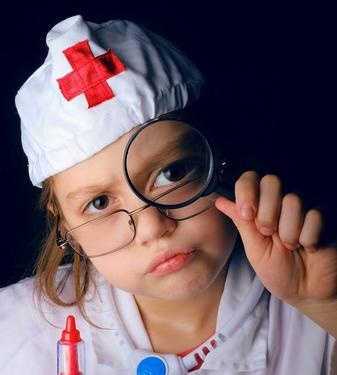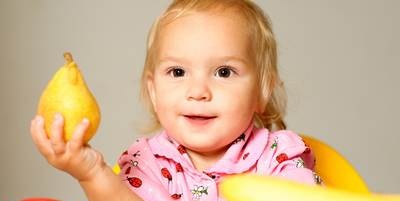|
 It happens that the peaceful course of life is suddenly interrupted by some unforeseen accident. In this section, we will talk about those emergencies that relate to our health. It happens that the peaceful course of life is suddenly interrupted by some unforeseen accident. In this section, we will talk about those emergencies that relate to our health.
... It was a sunny May day. On a wide, crowded alley leading to a large metropolitan department store, every now and then came across florists. Some just stood near the baskets with their fragrant goods, who made themselves comfortable on the packing boxes. And one of the sellers ... was lying on the ground. The cloying smell of the then not yet "forbidden" lilies of the valley hung over a basket of bouquets, over its owner, frozen in an awkward position on the lawn, over the crowd of people gathered around. And the hands of the clock on the wall of the department store moved, moving slowly, as if giving a chance to those who were lying on the ground and those who stood nearby. But no one took advantage of this chance. While the ambulance arrived, the time when it was possible to keep the life leaving a person was gone - along with this life ... The crowd dispersed.
Maybe it consisted entirely of indifferent people, just "onlookers" devoid of compassion? Of course not. Some would like to help the dying man, but they did not move, fettered by fear and confusion. Others - they were probably the majority - were “shackled” by the lack of basic knowledge and skills required in such a situation.
You can try to eliminate this kind of illiteracy by reading special brochures of the sanitary education. But this is not enough, because to consolidate knowledge you need at least some practice. Moreover, a person should be trained to apply them in practice, the ability to suppress fear, insecurity, confusion - in a word, all emotions that ultimately interfere with the manifestation of real compassion. Let's start with the simplest.
A small splinter, "earned" by a kid in a sandbox, can cause a small family tragedy. Or maybe - the reason for the first lesson of self and mutual help. Calmly, without intimidating, explain to the kid why the splinters must be removed, as well as smearing strong scratches with iodine or green paint. Disinfecting the needle with alcohol, with which you will remove the splinter, also explain what this procedure is for. Do not forget to praise the child for his courage during the "operation", even if it was accompanied by the groans and tears of the victim - approval in advance in such cases, in our opinion, is more effective than accusations of cowardice, because the baby is just learning everything.
 We often ignore minor household injuries such as a slight burn on the hand while cooking or a shallow cut on our finger or almost automatically perform the procedures necessary in each case. Objectively, outside help is not required here, however, if a baby is growing in your family, entrust him with the role of a sister (or brother) of mercy. Gradually, he will master the simplest first aid techniques, learn to respond to someone else's pain with compassion and without fuss, in a businesslike manner, and will take on your - worthy - attitude to his own pain. Of course, it is necessary to measure the degree of trauma and the age and individual mental characteristics of the child, because not even every adult is able to endure the appearance of another wound. However, as they say, God save us from serious misfortunes. We often ignore minor household injuries such as a slight burn on the hand while cooking or a shallow cut on our finger or almost automatically perform the procedures necessary in each case. Objectively, outside help is not required here, however, if a baby is growing in your family, entrust him with the role of a sister (or brother) of mercy. Gradually, he will master the simplest first aid techniques, learn to respond to someone else's pain with compassion and without fuss, in a businesslike manner, and will take on your - worthy - attitude to his own pain. Of course, it is necessary to measure the degree of trauma and the age and individual mental characteristics of the child, because not even every adult is able to endure the appearance of another wound. However, as they say, God save us from serious misfortunes.
Many first aid techniques can be learned during the game. One of the most common children's games is "doctor". But it is not at all necessary that the dolls suffer only from diseases known from Aibolit: “cholera and sore throat, scarlet fever and bronchitis”. Silent patients may faint (from fright) or sunstroke, they may be bitten by a scoundrel wasp; in the end they can "eat" a stale pie and, alas, get a little poisoned ...Rescuing the “victims”, you can use plain water instead of alcohol, iodine, etc. in the packaging for real medicines, edible or inedible “substitutes” instead of solid preparations, but it is necessary to name and manipulate “medicines” not “for fun”, but “according to the truth. " With older children, you can learn to apply various medical dressings (from simple to complex) on dolls according to the rules, stop bleeding, fix a fracture, and do artificial respiration.
It is clear that the "accelerated method of teaching" is useless here, and it is not possible in childhood to fully master all the first aid techniques, in particular, for example, artificial respiration. But the constant return to this topic in games, the gradual expansion of the range of learned techniques and involved "patients" (parents, schoolmates) will facilitate the learning process, make it fun. What was pledged in childhood will certainly bear fruit.
And if it turns out that your grown up child will one day be next to a passer-by, prostrate on the ground, he will not observe in silent sympathy how a person's life goes away with the minutes, he will do everything to keep it - until an ambulance appears.
Perhaps many of the first aid techniques are unknown to you as well as the younger family members. This means that here too - we study together.
Sashina E.Yu. The ABC of Home Economics
|
 It happens that the peaceful course of life is suddenly interrupted by some unforeseen accident. In this section, we will talk about those emergencies that relate to our health.
It happens that the peaceful course of life is suddenly interrupted by some unforeseen accident. In this section, we will talk about those emergencies that relate to our health.








